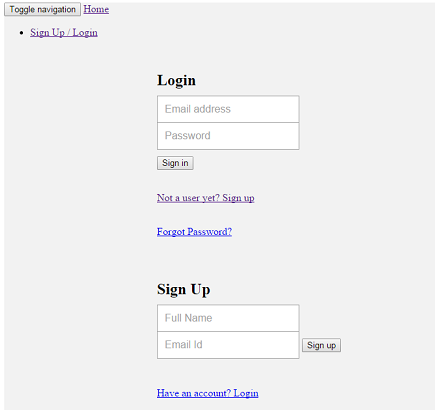Succeeded run commands…when opened browser…got connection refused
Can you access it from the server itself?
curl localhost
curl: (7) Failed connect to localhost:80; Connection refused
All scripts/commands run successfully. Any idea?
I managed to get it set up, and it involves applying a different security group to the amazon EC2 instance. You need to make sure the ports are open and that all IP addresses are open. Below is an example of completely open:
you write --ad-port=80/tcp correct is --add-port=80/tcp
@wwalford I followed your security group setting but still doesn’t work. Even with all traffic types are opened, the problem still persists.
I think the problem should be in the server as I followed @pdvyas to run ‘curl localhost’ from PuTTY client and I got: curl: (7) Failed connect to localhost:80; Connection refused
The instance is using CentOS 7 (x86_64) with Updates HVM
Please anybody can help?
Tks
@Jonathan_Fanny_Lie yes, seems like the server is not running.
Disable SELinux, reboot and try curl localhost again
If that doesn’t work, post the output of
sudo supervisorctl status
tail -n50 /var/log/nginx/error.log
If SELinux is the issue, the following TE should help.
module frappe_selinux 1.0;
require {
type user_home_dir_t;
type httpd_t;
type user_home_t;
type soundd_port_t;
class tcp_socket name_connect;
class lnk_file read;
class dir { getattr search };
class file { read open };
}
#============= httpd_t ==============
#!!!! This avc is allowed in the current policy
allow httpd_t soundd_port_t:tcp_socket name_connect;
#!!!! This avc is allowed in the current policy
allow httpd_t user_home_dir_t:dir search;
#!!!! This avc is allowed in the current policy
allow httpd_t user_home_t:dir { getattr search };
#!!!! This avc can be allowed using the boolean 'httpd_read_user_content'
allow httpd_t user_home_t:file open;
#!!!! This avc is allowed in the current policy
allow httpd_t user_home_t:file read;
#!!!! This avc is allowed in the current policy
allow httpd_t user_home_t:lnk_file read;
Hi @pdvyas,
sudo supervisorctl status:
frappe:frappe-web RUNNING pid 816, uptime 0:07:51
frappe:frappe-worker RUNNING pid 814, uptime 0:07:51
frappe:frappe-workerbeat RUNNING pid 817, uptime 0:07:51
what is the command to disable SELinux and reboot as I’m not linux user?
Tks
Disabled selinux, rebooted,…now when access via browser, it showed login page with signup form … When clicked signup, failed didn;t work anything…
… When clicked signup, failed didn;t work anything…
Where is ERPNext? WHere to set up it for the first time?
Tks
Anybody can help on this?
Thanks
Are you specifically wanting to set it up on CentOS 7. I have set it up on Ubuntu 14.04. Basically all you need to do is run the following two commands:
wget https://raw.githubusercontent.com/frappe/bench/master/install_scripts/setup_frappe.sh
sudo bash setup_frappe.sh --setup-production
Once the commands are run go to the public IP address of the server (or public DNS with no www). Works great every time I have done it. It gets a bit different if you want to use a domain but to just get it working I have had no need to change tons of port settings ect. But again this is on Ubuntu 14.04
Can you start with a fresh install and disable SELinux before running the install script?
Or try running on Ubuntu 14.04
@pdvyas, I run easy install script on Ubuntu 14.04 successfully…
When go through browser, it’s showing login page
Where is ERPNext? Tried to signup but didn’t work
Awesome!
It must have printed the administrator password. Login using it with email address as “Administrator”
Where to see Administrator password?
Tks
Must have been printed. You can also see it with cat ~/frappe_passwords.txt
Tks @pdvyas it’s working perfectly now.
Okay then, I want to test/see how the multitenancy works
i just created new site (site2), installed erpnext inside, reload nginx etc using DNS based multitenancy as showed on Multitenant Setup · frappe/bench Wiki · GitHub.
How the way it work? We we poin public-dns via browser it shows default-site (site1), what to do so it can recognize site2? Do I need subdomain? Can we make it something like-without subdomain- www.abc.com/site2…?
Could you list best-pratice steps to setup this multitenancy?
Tks

